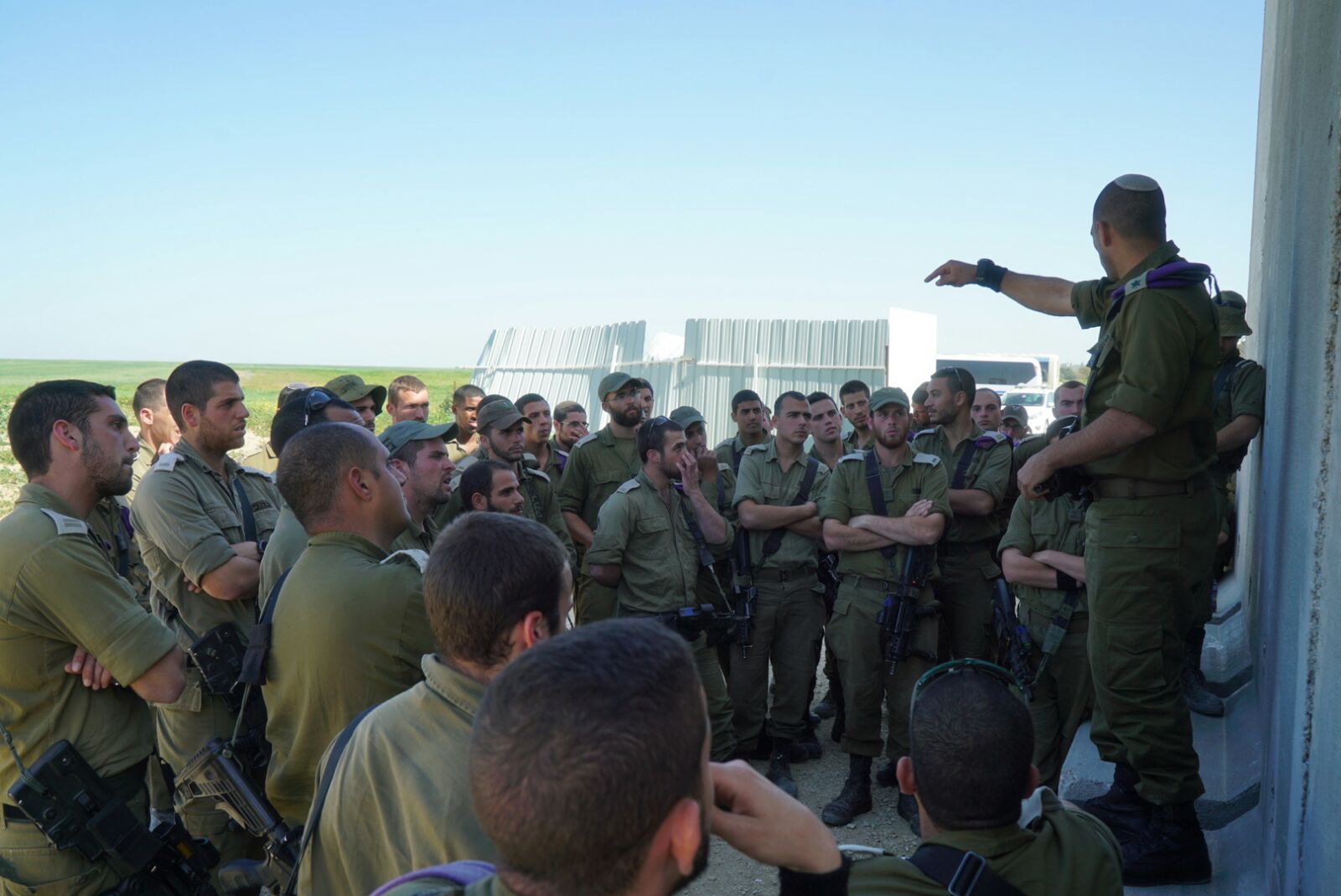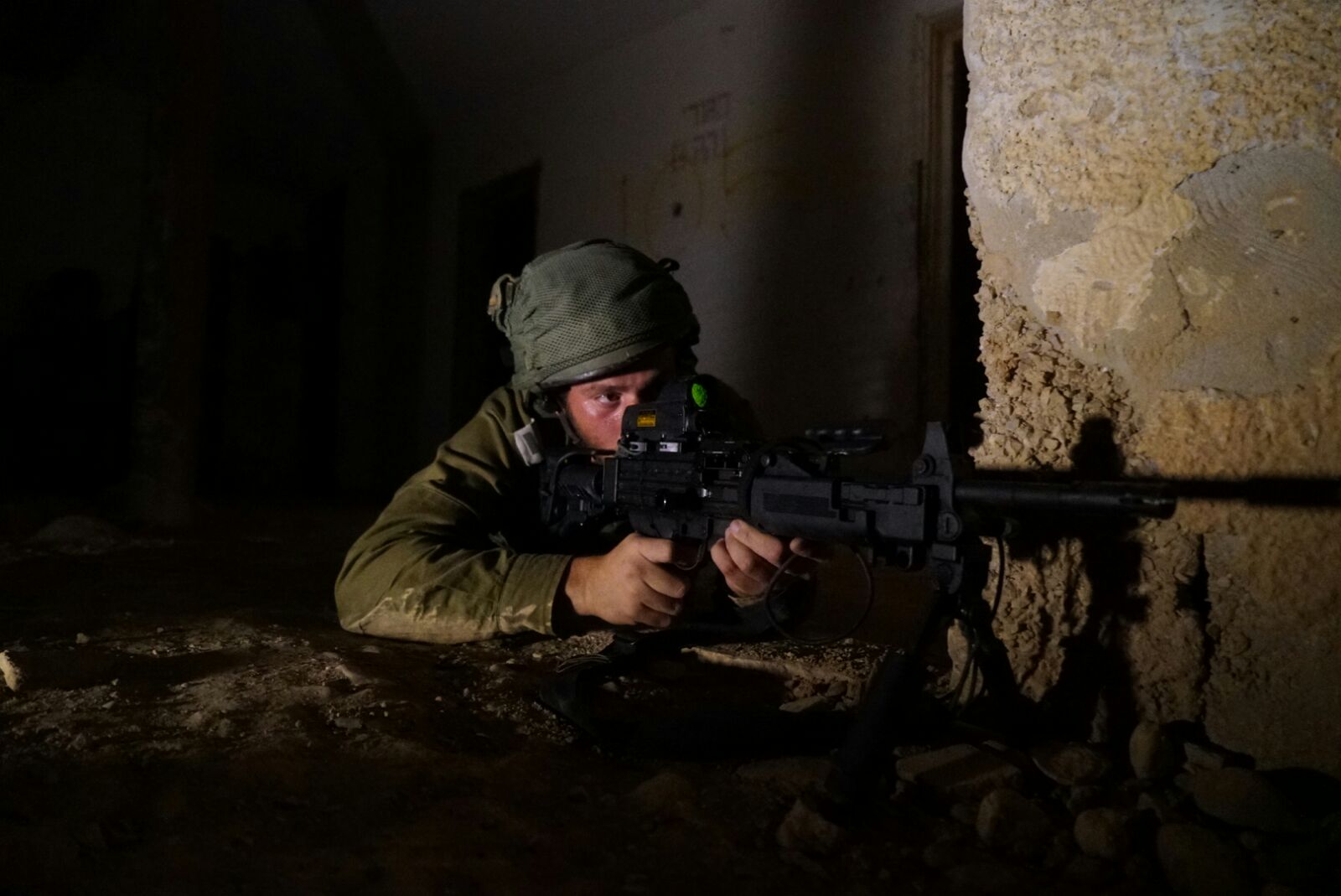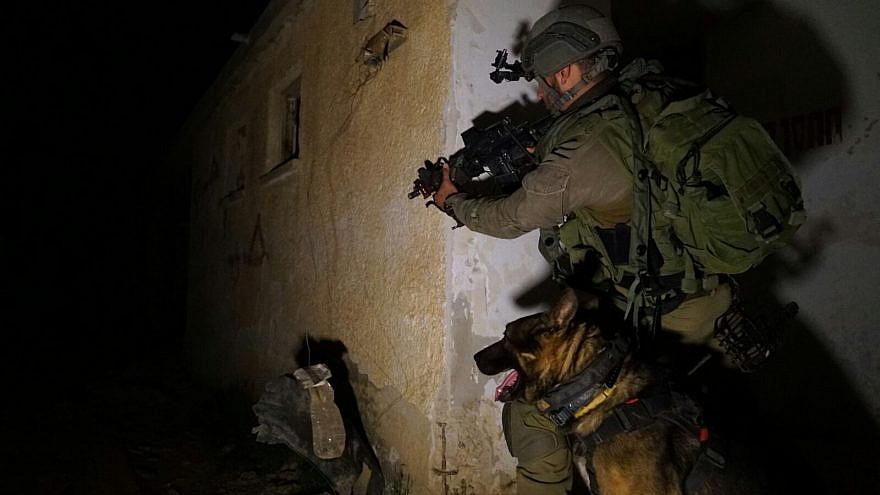Since Hamas came to power in the Gaza Strip more than a decade ago, it has built, trained, and armed a terrorist-army and guerilla force, and planted it in high-rise buildings, underground bunkers, and tunnels, in the midst of the civilian population.
Israel and Hamas have engaged in three large-scale conflicts and numerous smaller-scale flare-ups over the past ten years, and, as the IDF looks ahead to the future, it is preparing new ways for its units to operate in this urban warfare jungle, if the need arises.
The Israel Defense Forces recently held a war exercise for its infantry commanders to prepare them for the challenges of combat in Gaza.

The drill, held by the Givati infantry brigade, played out over a number of areas, including the southern city of Ashkelon, where officers simulated fighting in and around tall residential towers.
In Gaza, such multistory buildings double up as military bases for Hamas’s armed wing. The terror group uses them as command posts, lookouts and firing positions for its cells. Such buildings will, in the IDF’s assessment, be used as positions by Hamas cells armed with shoulder-fired missiles, sniper rifles and additional heavy firepower.
The exercise showed the commanders how to operate in such an environment, as well as served to teach them how to train their own soldiers.
‘Concept of the 360-degree threat’
“In this last drill, we focused in a major way on the concept of the 360-degree threat. The fact is that the enemy can appear from above and below,” Maj. Guy Madar, a former Givati deputy battalion commander and a key planner of the drill, told JNS.
“When they enter the combat arena, they could have [enemy] people under their feet. And they need to look up. The enemy is not naïve. It wants to try its own surprises against us,” said Madar. “Those who will win are those who act with cunning and creativity. It will be those who know how to think differently.”
Madar added that “this exercise is about Gaza. We wanted to achieve four training goals: nighttime combat; fighting in armored vehicles; combat in urban closed areas, with a strong emphasis on tall buildings and tunnels; and focusing on the smaller units, at the level of platoons and companies.”
The drill reflects the new thinking in the IDF. It’s these kinds of smaller units—the companies and platoons—that will ultimately decide the outcome of urban battles against Gaza’s armed factions.

As a result, the training of commanders has become a top priority. Commanders of larger units, like battalions, oversee a wider area, said Madar. “The platoon commanders are at the operational edge. They will be the ones experiencing friction with the enemy. … It is the platoon commander who will encounter the enemy.”
The training also made use of the IDF’s digital network, which links up commanders to tanks and air-force strike aircraft.
“I can identify an enemy, press the coordinate on the [digital] map, and it will show up immediately in the tank,” said Madar. “Our lethality has grown.”
Use of drones represents a ‘huge change’
The drill involved new quadcopters that recently entered service in the IDF. The drones—currently commercially made, but which will be replaced with military quadcopters in the future—have revolutionized the ability of low-ranking commanders to request and receive aerial picture of their battle space.
“Until today, it was the air force that provided this. Now, the military company provides it,” said Madar. “This is a huge change.”
The exercise marks the start of a four-month war-training period, meaning that the Givati brigade has rotated away from active missions. The first step focuses on showing commanders how to train others. “In the civilian world, it would be like preparing the managers to run their departments,” said Madar.
In addition, the need to train commanders in dealing with civilian populations during combat is critical, he added.
Soldiers in the exercise role-played as civilian families and wounded civilians. The commanders “experienced civilians shouting and chaos” that the Israeli military will have to face.
As Madar explained: It is clear to us that the deeper one maneuvers, the more civilians one will have to deal with.”
Platoon commander Sec.-Lt. Nadav Serlin, who took part in the exercise, told JNS about an unprecedented level of intelligence that commanders now receive about the threats that await them in Gaza. “We heard about how the enemy is preparing itself against us … the knowledge of what is going on, on the other side, and hearing specific information on what is waiting for us makes us feel much more prepared,” he said.
“We understand that in Gaza, many of the main multistory buildings contain a lot of threats,” said Serlin. “These tall buildings give control of the area.”
Training on how to cooperate closely with the armored corps and the air force is key to victory, he added: “You have to use all of the additional means [at your disposal] to get over the limitations of the infantry. Knowing how to train our soldiers is the most important thing. There is always room to improve, but this was a significant step up.”


























